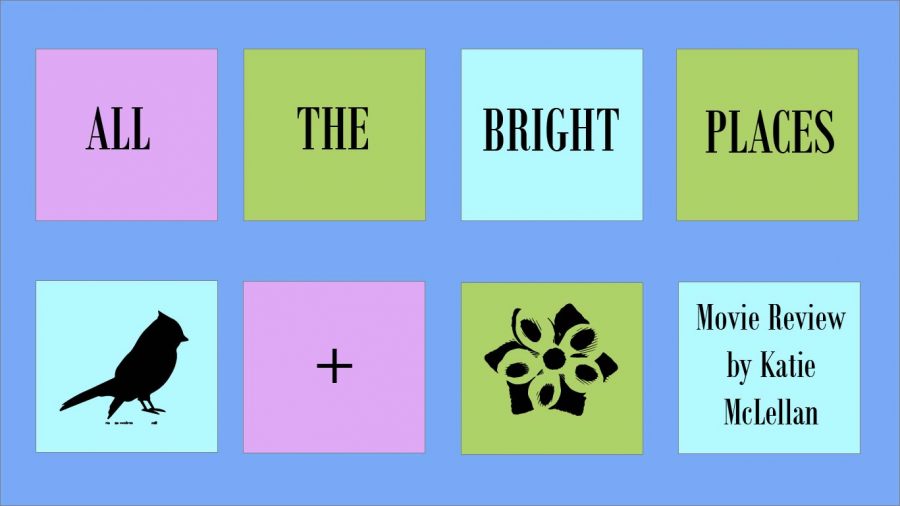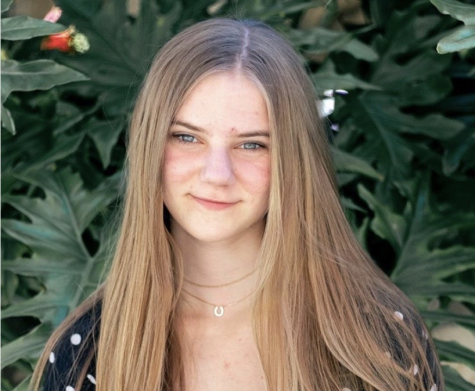Life at full brightness
Movie review of “All The Bright Places” **SPOILER ALERT**
March 11, 2020
I waited until my family had left the house, immediately stationed myself in front of my aunt’s impressively large flatscreen and settled in for over an hour of snacking and crying while watching the film “All The Bright Places.” After reading the book by Jennifer Niven, I was more or less prepared for the movie, which meant a box of tissues was handy and I was ready to be disappointed if the movie didn’t stay true to the book, which I dearly love. It did miss major characters and moments from the book, but stand-alone the film was better than I expected.
The storyline follows the lives of two high school seniors, Theodore Finch and Violet Markey, who meet on the ledge of a bridge, both struggling with separate mental health issues. Violet had spent the past year since her sister Eleanor’s death in a daze, and when Finch, “the freak” at school, stops her from jumping one morning, the two form a reluctant and instant connection. It’s a twist on the overused high school love affair. It delves into the impacts of bipolar disorder and depression on social interactions, school life, and trauma, especially when Violet discovers that Finch, despite saving her, needs a lot of saving too. What might be even more painful for Violet, and viewers, is how it’s too late.
I didn’t even finish the book for a few months because I knew the only way it could end was with Finch’s suicide. In the movie, Violet notes the entire time Finch was teaching her to move on from her sister’s death, he was, in a way, teaching her how to get over his. It’s clear from the time he first appears in the book and movie that it’s only a matter of time before he takes his own life.
While the movie ignores several major points, such as Violet’s magazine Germ and the fact that Finch has Sunday visits with his dad and does, in fact, have a little sister Deca, I got over the initial shock. I wouldn’t say I let this go, but I did come to understand that the film works without these elements, however disappointing it is. It also let go of many of the little details that made the book so powerful, such as the bird from Finch’s childhood and how, in the beginning, Violet wears Eleanor’s glasses.
For viewers like me who consumed the book at breakneck speed, the movie disappoints. However, this does not mean the film didn’t nail the visuals and tell a beautiful story. It just managed to only tell the surface level of that story. Viewers who never read the book will find it compelling, hard-hitting and a stunning story about the complications of loving someone who has mental health issues. However, people who did read the book will find the film’s visuals fall flat as it glosses over major plot points and lacks information that makes the book the intense and well-thought-through publication it is.
It might have been too late for Finch, but Violet was given a second chance, and that’s something that resonated with me because of how delicate the storyline is and how emotional it made me. I highly recommend you read the book, and if you can’t stomach that, watch the film. There’s a lot to be said for a story that doesn’t shy away from a truth that’s both beautiful and tragic. “All The Bright Places” is heartbreaking, but it teaches Violet and viewers that life is fleeting and should be lived at full brightness.







